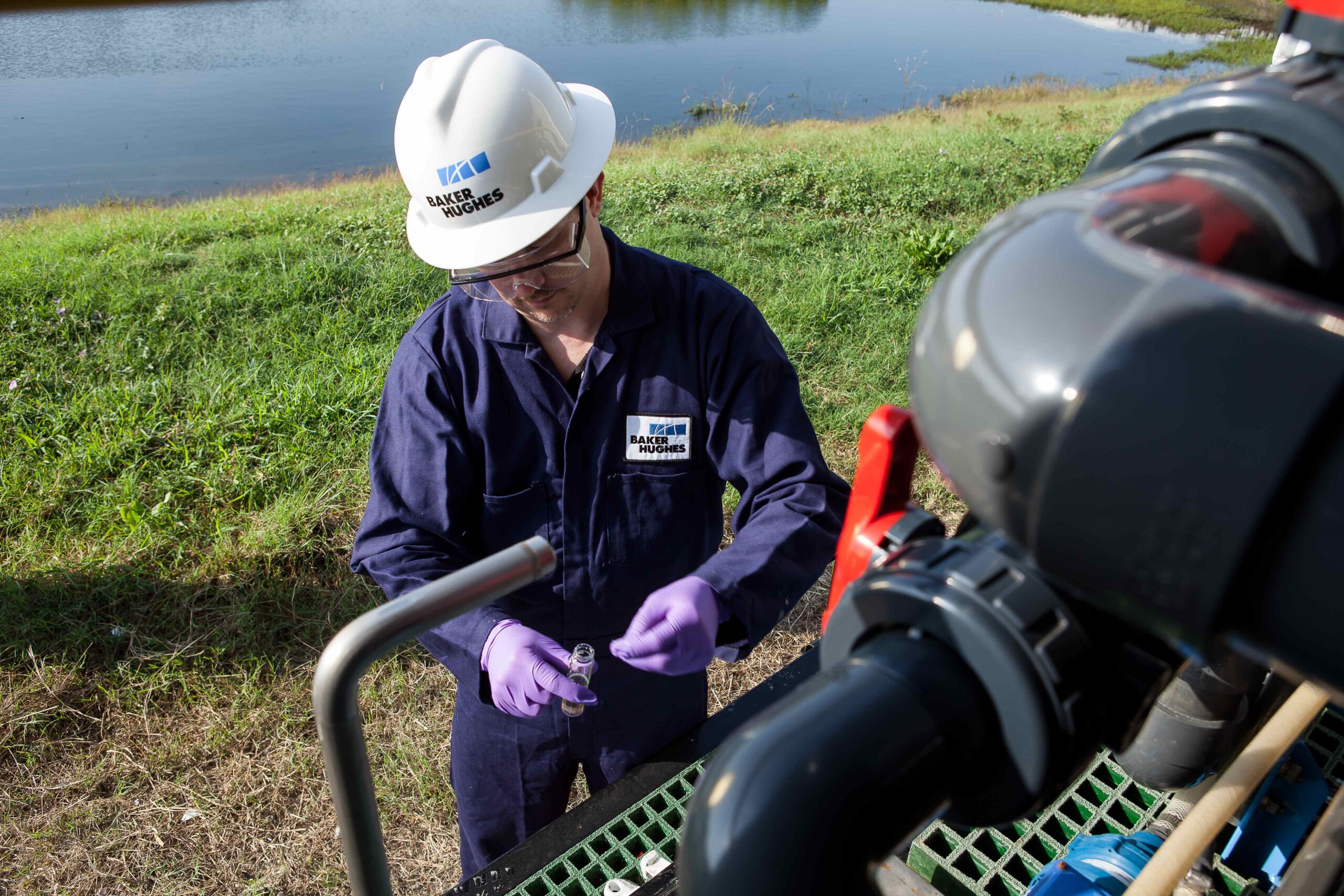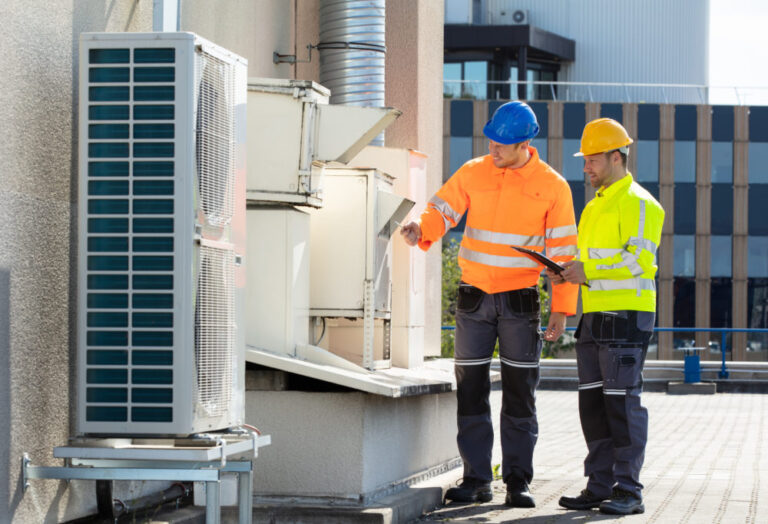7 Best Software Tools For Water Treatment Specialists
Water treatment specialists play a crucial role in ensuring safe and clean water for various communities and industries. With the advancement of technology, a range of software tools is now available to make their tasks more efficient and effective.
The right software tools can streamline tasks, reduce errors, and improve overall efficiency in water treatment processes. Whether it’s managing chemical balances or designing new treatment plants, these software solutions offer valuable support to professionals in the industry.
1) Hach Water Information Management Solution (WIMS)
Hach Water Information Management Solution (WIMS) provides a comprehensive tool for managing water and wastewater systems. It offers data collection, reporting, and analytics. WIMS integrates with multiple data sources such as SCADA, LIMS, and manual data entries.
Users can create custom reports to meet specific regulatory requirements. The software supports compliance with EPA and state agencies. It also features intelligent alerts to help operators detect and resolve issues promptly.
Hach WIMS is equipped with advanced modeling tools that allow users to predict and prevent disruptions. These tools can simulate various scenarios, making it easier to plan and optimize plant operations. The secure central database ensures data integrity and accessibility.
This platform is highly customizable, catering to both small and large water treatment facilities. It can streamline workflows, saving time and reducing operational costs. Hach WIMS helps operators make informed decisions based on real-time data analysis.
Users appreciate the powerful charting, graphing, and mapping tools available in WIMS. These visual tools help in understanding and managing complex data sets effectively. The software also includes troubleshooting tools for data verification and validation.
For more information, visit the Hach WIMS website. This solution stands out for its comprehensive approach to water data management and its robust features designed to enhance operational efficiency.
2) Milton Roy Dosing Pumps
Milton Roy offers a range of dosing pumps known for their precision and long-lasting performance. They have been in business for over six decades, designing and manufacturing API 675 compliant pumps.
These pumps are used in various industrial applications, including chemical processing and water treatment. They provide reliable metering of chemicals, with a steady-state accuracy of ±1%. The durability of these pumps ensures consistent performance even after years of use.
For water treatment, Milton Roy metering pumps are highly reliable. They are essential in processes like dosing flocculants, coagulants, and disinfectants to control the pH and other aspects of water quality.
Milton Roy also offers the DOSASKID chemical-dosing system. This pre-engineered system is designed for quick shipment and provides accurate metering in water and wastewater applications. The sturdy construction of DOSASKID ensures reliable operation under demanding conditions.
Another notable product is the mROY series metering pump. These pumps are compact and can handle harsh chemicals with high precision. They often maintain their design performance for over 20 years, making them a trusted choice among specialists.
In addition to pumps, Milton Roy provides various accessories, including pressure relief valves and pulsation dampeners. These accessories help ensure smooth operation and meet the needs of complex dosing processes.
Milton Roy’s dosing pumps and systems are a reliable choice for water treatment specialists seeking durability and precision in their equipment. They continue to set industry standards with their innovative solutions.
3) Grundfos Hydro MPC BoosterpaQ
The Grundfos Hydro MPC BoosterpaQ is an advanced water pressure boosting system designed for optimal performance and reliability. This system integrates a pump, motor, and variable frequency drive from one manufacturer, ensuring seamless operation.
Water treatment specialists can rely on the Hydro MPC BoosterpaQ for efficient water supply management. It is equipped with the CU 352 MPC controller, which offers advanced control features for precise and efficient operation.
The Grundfos Hydro MPC BoosterpaQ is suitable for a range of applications, including commercial buildings and industrial plants. It is highly efficient, helping facilities achieve significant cost and energy savings. For instance, a pharmaceutical company was able to save $17K in costs and 32.6kWh in energy savings by using this system.
This system is also known for its robust design and durability. The pumps in the Hydro MPC BoosterpaQ are made from high-quality materials, including hygienically designed 316 stainless steel. This ensures long-lasting performance even in demanding environments.
For easy configuration, the Grundfos Product Center sizing tool can be used to tailor the Hydro MPC BoosterpaQ to specific needs. Additionally, the Grundfos ECADEMY offers training resources to help users become proficient with the system.
Learn more about the Grundfos Hydro MPC BoosterpaQ here.
4) Bentley OpenFlows WaterGEMS
Bentley OpenFlows WaterGEMS is a reliable software tool for water distribution network modeling. It helps engineers optimize and analyze water systems efficiently.
WaterGEMS provides a user-friendly interface. It allows users to calculate water flow, pressure, and network behavior with ease. The tool supports decision-making by offering detailed insights into system performance.
This software aids in understanding infrastructure response to operational strategies. With WaterGEMS, specialists can predict how changes will affect the entire network.
One of the standout features is its ability to model demand growth. As populations increase, WaterGEMS can help plan for future water needs. This ensures sustainable and efficient water distribution over time.
Interoperability is another key aspect. WaterGEMS works with other software, such as CAD and GIS applications. This compatibility makes data integration seamless and enhances project collaboration.
Energy management is also a focus in WaterGEMS. Users can model energy costs and optimize pump operations. This helps reduce overall energy consumption and operational costs.
Risk management capabilities include detecting potential issues before they become critical. By analyzing different scenarios, WaterGEMS helps mitigate risks and plan for emergencies.
To learn more about this software, visit Bentley OpenFlows WaterGEMS. This resource provides further details on features and benefits.
WaterGEMS is suitable for both small and large-scale projects. Its tools make managing water distribution systems more efficient and effective for specialists everywhere.
5) Aquionics UV Disinfection Systems
Aquionics UV disinfection systems stand out for their effectiveness in treating water. They utilize ultraviolet light to eliminate bacteria, viruses, and other harmful microorganisms. This technology ensures high levels of disinfection without relying on chemicals.
The InLine+ series is well-known for its use in drinking water treatment. It has been validated by detailed testing, showcasing its reliability and efficiency. This series is particularly useful for ensuring safe drinking water in various settings.
Aquionics also offers the SwimLine, designed for aquatic applications. This system is powered by technology from Hanovia and aims to reduce operating costs while maintaining high performance. It is engineered to meet the demands of pools and other water-related activities.
For wastewater treatment, the City of Silverton in Oregon uses Aquionics systems to lower energy and maintenance costs. These systems help manage large volumes of wastewater efficiently, making them a valuable tool for municipal facilities.
The benefits of these UV systems include low maintenance and an environmentally friendly approach. They eliminate the need for chemical treatments, which can be harmful to the environment. This makes them a popular choice among water treatment specialists looking for sustainable solutions.
Aquionics’ products cater to different needs, from drinking water to wastewater management. Their use of UV technology provides a safe and effective way to ensure clean water across various applications.
6) Blue-White FLEXFLO A-100 Series
The Blue-White FLEXFLO A-100 Series is known for its high-quality peristaltic metering pumps. These pumps are designed to deliver liquid chlorine and acid accurately to pools and small aquatics.
The A-100NA model stands out. It can feed up to 124.08 GPD (gallons per day) with a maximum working pressure of 100 PSI. This makes it reliable for various water treatment needs.
Another notable model is the A-100N. It includes two tube assemblies, a discharge injection fitting with a check valve, and a suction tube made of clear PVC.
Both models offer precise output control. This allows water treatment specialists to adjust the feed rates according to specific requirements. This flexibility is crucial for efficient water management.
Additionally, the peristaltic pumps in this series are known for their gentle pumping action. This feature is beneficial for handling difficult-to-pump fluids, including gaseous chemicals and viscous slurries.
Blue-White FLEXFLO A-100 Series pumps are also praised for their minimal maintenance needs. Their design ensures long-term use without frequent issues, making them a dependable choice for professionals. For more details on their features and specifications, visiting the official website can provide further insights.
7) Endress+Hauser Liquiline System CA80PH
The Endress+Hauser Liquiline System CA80PH is an advanced tool for water treatment specialists.
This orthophosphate analyzer offers precise online measurement. It’s designed to optimize the dosing of precipitants in wastewater treatment.
With its plug-and-play setup, it supports up to four Memosens sensors. This feature reduces installation time and effort.
Automatic calibration and cleaning functions help save time and resources. The low reagent consumption is another cost-saving benefit.
The device is suitable for municipal and industrial applications. It can monitor and optimize treatment processes in wastewater plants.
The CA80PH is a wet-chemical analyzer that ensures almost continuous monitoring. It is effective in checking treatment efficacy and regulating precipitant dosages.
The analyzer has a membrane filtration system for sampling and filtration. This includes automatic backflushing with cleaning solution and compressed air.
Learn more about the Liquiline System CA80PH from Endress+Hauser.
Understanding Water Treatment Processes
Water treatment processes are essential for ensuring safe and clean water supply. The stages involved include assessing the water source, treating its contaminants, and using advanced techniques to achieve high water quality.
Water Source Assessment
Evaluating the water source is the first critical step. Specialists determine the type of water—surface or groundwater—and its characteristics. They test for pollutants like bacteria, chemicals, and heavy metals. Accurate assessment ensures that the treatment methods will effectively address all types of contaminants.
To gather this information, they might collect water samples and run tests in a lab. This helps in deciding the appropriate treatment methods. They also consider seasonal variations and potential sources of contamination in the surrounding environment.
Primary and Secondary Treatment
Primary treatment focuses on removing large particles and debris from the water. Methods include screening and sedimentation. These processes are designed to eliminate solids like sticks, leaves, and sand, which can cause blockages and operational issues.
Secondary treatment tackles dissolved and fine particulate matter. Techniques such as biological treatment and filtration are applied. Biological treatment involves using microorganisms that consume organic matter. Filtration systems like sand filters further purify the water by trapping smaller particles.
Advanced Treatment Techniques
Advanced treatment methods aim to remove remaining toxins and improve water quality to meet stringent standards. Techniques include advanced filtration, chemical treatment, and membrane technologies.
Advanced filtration methods like activated carbon filters remove organic compounds and chlorine. Chemical treatments use agents like ozone and chlorine dioxide to disinfect the water. Membrane technologies, including reverse osmosis (RO) and ultrafiltration (UF), are highly effective at removing dissolved salts, bacteria, and even viruses.
For more detailed insights into specific software capable of designing these processes, consider looking at tools like Water Treatment Plant Designer by Envirosuite, or WAVE Water Treatment Design Software by DuPont which aid in these stages.
These stages ensure the water treatment process efficiently delivers safe and clean water.
Importance of Software in Water Treatment
Software tools play a crucial role in improving operational efficiency and ensuring regulatory compliance in water treatment processes.
Enhancing Efficiency
Water treatment software helps in streamlining various processes. Tools like WAVE Water Treatment Design Software simplify the design process with a user-friendly interface. This reduces the time and effort needed to manage water treatment systems.
Furthermore, software such as EVS Water Plant Designer allows for precise design and simulation of treatment plants. This helps in identifying potential issues before they arise in real operations. By consolidating different processes into a single platform, these tools help save time and reduce human error.
Monitoring and Compliance
Monitoring regulatory compliance is easier with specialized software. Programs like WTPSOFT04 provide detailed information about the dimensions and design parameters of treatment units. Flow rates and power ratings can be tracked effortlessly.
Additionally, tools such as ZenTrades offer features that ensure all operations meet environmental standards. This includes real-time data tracking and reporting capabilities, making it easier to comply with local and international regulations. By providing accurate and up-to-date information, these software solutions help in maintaining high standards of water quality and safety.
Future Trends in Water Treatment Technology
Future technologies in water treatment focus on integrating artificial intelligence, machine learning, sustainability, and green technologies to enhance efficiency and environmental friendliness.
Integration of AI and Machine Learning
Artificial intelligence (AI) and machine learning are transforming water treatment processes. These technologies help in predictive maintenance by analyzing equipment performance and predicting failures before they occur. This reduces downtime and maintenance costs.
AI also optimizes chemical usage by monitoring water quality in real time. Machine learning algorithms analyze patterns and suggest adjustments, ensuring optimal water quality while minimizing chemical use.
Additionally, AI-driven data analytics provide insights into water system operations. This facilitates better decision-making, efficient resource allocation, and enhanced system performance.
Automated systems manage large volumes of data, making complex processes more efficient. This ultimately leads to improved reliability and cost savings.
Sustainability and Green Technologies
Sustainability is crucial for the future of water treatment. Bio-based water remediation uses natural processes and organisms to break down pollutants. This makes water treatment more environmentally friendly.
Energy-efficient integrations are also critical. New technologies aim to reduce the energy consumption of water treatment systems. For instance, carbon-based purification methods require less energy compared to traditional systems.
Desalination is becoming more energy-efficient as well. Advances in technology allow for the removal of salts from seawater with lower energy input, making it a viable option in areas facing water scarcity.
Incorporating renewable energy sources, like solar and wind, into water treatment processes further reduces the carbon footprint. This makes water treatment not only efficient but also sustainable.
Frequently Asked Questions
This section answers common questions about software and tools used in water treatment and water quality management. It provides information on popular software options and methodologies in the field.
What software is used in water treatment?
Several software tools are used in water treatment to monitor, manage, and optimize systems. Hach Water Information Management Solution (WIMS) is popular for data management. Bentley OpenFlows WaterGEMS is frequently used for hydraulic modeling and analysis.
What software is used in water quality charity?
Water quality charities may use various tools to ensure safe and clean water. This could include basic data management software and specialized applications like Aquionics UV Disinfection Systems for monitoring and treating water to ensure safety and compliance.
What are the 6 methodologies used in water treatment?
The six methodologies used in water treatment typically include coagulation and flocculation, sedimentation, filtration, disinfection, chemical dosing, and UV irradiation. Each methodology is crucial for maintaining water quality and safety.
What is the best available technology for water treatment?
The best technology varies based on needs, but UV disinfection systems like those by Aquionics are widely regarded for their effectiveness. Grundfos Hydro MPC BoosterpaQ is noted for boosting water pressure efficiently in various systems.
Are there any free software tools for water treatment specialists?
Free tools are limited in water treatment. Most reliable software requires purchase or subscription. However, some companies may offer free trials or basic versions of their software to help specialists test their tools before committing.
Which software is preferable for designing wastewater treatment plants?
For designing wastewater treatment plants, tools like Bentley OpenFlows WaterGEMS and Aqua Designer by BITControl GmbH are valuable. These software programs help engineers design and optimize processes, ensuring thorough and efficient treatment.






